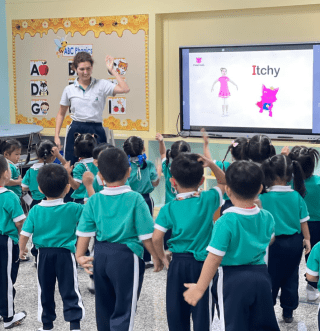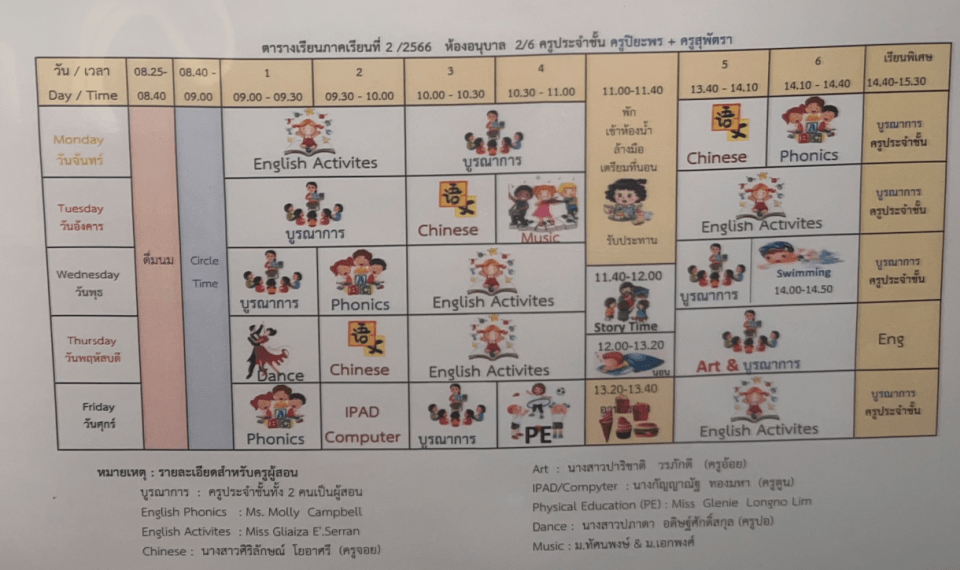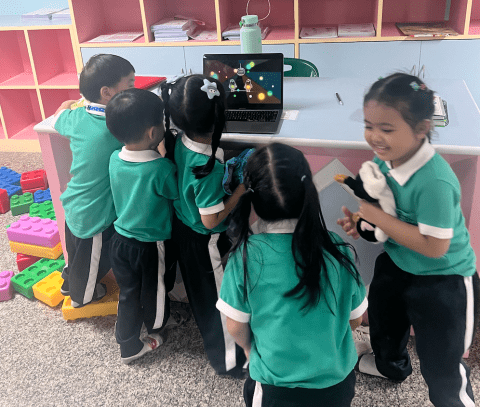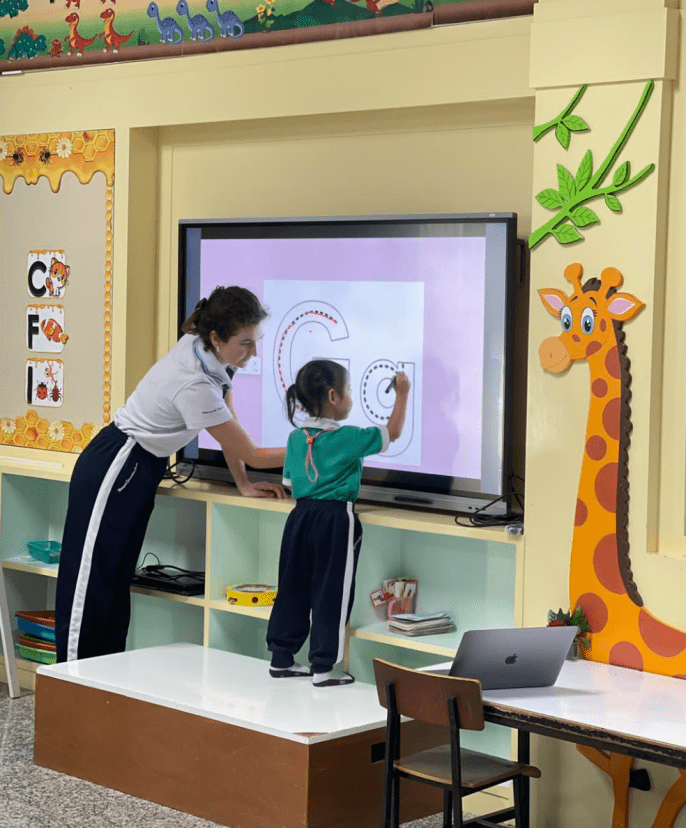Teaching Kindergarten!
Hi there! Have you received your placement for teaching or are you curious about teaching kindergarten in Thailand? If so, I’ve got some insights to share with you!
Teaching kindergarten entails embracing long workdays, occasional tears, and screaming… But it is also filled with an abundance of giggles, toothless smiles, loads of dancing, and an overwhelming amount of love. You will come to know that managing the age group ranging from three to six can be challenging, but there are numerous redeeming factors that make it my favorite.
In understanding what kindergarten in Thailand is like, it involves recognizing the division of the age group. In my school, we have 4 tiers of kindergarten. First, there’s nursery for children aged two to four. Next is K1, mostly composed of four-year-olds, followed by K2 with five-year-olds, and lastly, K3 with six-year-olds.
In nursery and K1, the students don’t sit at desks; instead, they have a large open space to roam around and play on the floor. These early years focus on socialization and the beginning of classes. A typical day teaching phonetics to a K1 class is learning two to three letters and then practicing writing the letters. We try to end class on a fun note, meaning we close with a song, dance, or activity. Some of my favorites have been a wiggle song or duck duck goose.

Moving on to K2 and K3, students are preparing for their transition to the primary building. They sit at desks and follow a more structured schedule and engage in various classes. A typical schedule looks like 30 minutes learning English phonics, a 30 minute music class, 30 minutes learning Chinese, lunch and a nap, and an hour for English activities. Here is an example of a schedule for one of my classes:

Despite the distinct learning expectations between nursery + K1 and K2 + K3, all groups enjoy having fun! In my lessons, I try to prioritize movement and participation. My students respond the best when they are able to come up to the board and practice writing or drawing, or when we have something fun to do at the end of class. Some activities that the students seem to enjoy the most are polls, I did one about favorite ice cream flavors and snacks, youtube video activities, especially ones where they can run around the room, and coloring.

As well, I make sure to do lots of repetition in my classes to make sure the kids are taking the most out of class. For example, I start every class with the ABCs, and in each K2 lesson, we usually watch a video from Rock ‘N Learn. This repetition also helps with the language barrier, as the students don’t always follow what I am talking about.
Beyond the classroom, the joy of interacting with my students is enough for kindergarten to be my favorite. On a daily basis I receive too many hand hearts to count, so many hugs, more than enough “I love you’s” and lots and lots of high fives and fist bumps. Although there can be days where I’m tired from always being energetic in front of the little ones, or I’m sad from missing home – my day always ends with a smile as these children are filled with so much happiness and are always happy to share.
For those uncertain about teaching in kindergarten, just know that this is definitely a win! These children will quickly become your new best friends and, ultimately, feel like a part of your family.
Related Posts

Teaching in Thailand: Expecting the Unexpected and Redefining Productivity
One of the most magical (and, at times, frustrating) things about being an English teacher in Thailand is how chaotic and spontaneous everything is. Before I arrived, I had so... keep reading
Unexpected Things I Wish I Knew Before Moving to Thailand: The Ultimate Guide to Living in Thailand
I'm sure you've read enough big-picture descriptions of daily life as an American expat living in Thailand. Now, indulge in some of the quirks and seemingly small idiosyncrasies that define daily life here, based on my personal experience living right outside of Bangkok.

A Day in My Life Teaching Kindergarten
Before moving overseas, one question that constantly circled my mind was: What will my everyday life look like? I had lots of ideas, but I quickly realized it's impossible to... keep reading

